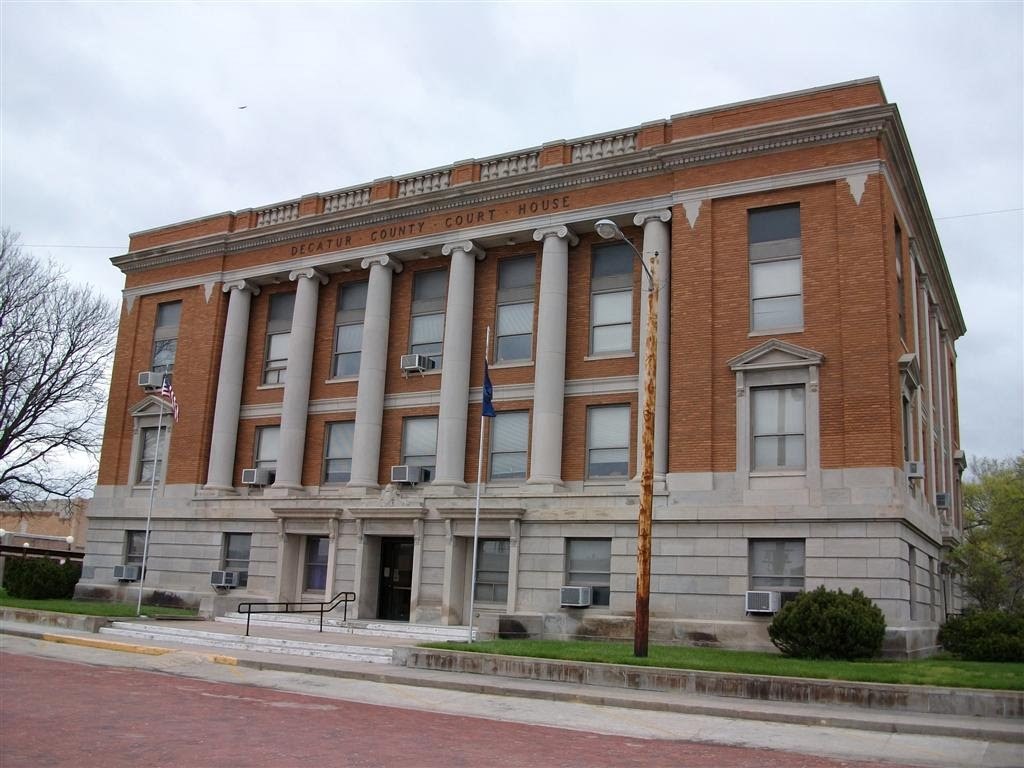-

Early Days Cedar Bluffs
Cedar Bluffs
BEGINNINGS
Trappers were trapping along the Beaver in the winter of 1872 and 1873. In this group was Joe Dimick, who decided to settle in the county. He camped the first winter on the present site of Cedar Bluffs. In the summer of 1873 James Jones, Lem Daniels, Clarence and Joseph Rathbone, James Addis, Joe Turby and Frank Kimball all took claims along the Beaver. Some of these men played an important role in the Indian raid of 1878. In the fall this group was joined by the Hemper and McKinzie families. A short while later Julia McKinzie and Clarence Dimick were married on April 28, 1873, the first couple to marry in this community.
CEDAR COVERED HILLS IS HOW THE TOWN GOT ITS NAME
Cedar Bluffs was named for the cedar covered bluffs to the southeast of town.
EARLY SETTLERS
When Joseph Dimmick from Packersburg, Iowa, homesteaded the northeast half or better known as the Joseph Weyeneth quarter, which borders the state line and joins the former Cecil Vernon farm now owned by Marion Mockery. After homesteading in the spring of 1870, he established the post office on December 4, 1873 and gave it the name Cedar Bluffs and became its first postmaster. Mr. and Mrs. Dimmick were true pioneers, having founded the town of Packersburg before coming west.
Accompanying Dimmick here were his son, Joseph Jr. and his wife and also a son-in-law, Lemuel Daniels and his wife. Joseph Dimmick, Jr. homesteaded what is now the Dick Macy farm and Daniels homesteaded the W.R. Redfern land which lies directly west of the Dem Moore farm. In the fall of 1870, Clarence Dimmick came to join his parents, walking from Crete, Nebraska to Cedar Bluffs. He homesteaded the Bessie Adams farm. He was the first mail carrier to Cedar Bluffs, bringing it on horseback from Orleans, Nebraska.
The town site was surveyed and platted in May 1886 by the Lincoln Land Company of Iowa. The Chicago, Burlington &; Quincy Railroad tracks reached Cedar Bluffs in 1877. The depot closed in 1954 and Mrs. Loyd Millard was the last depot agent. By the early 1900s the town had 18 to 20 business places in operation.
These first six homesteaders were joined in the next few years by a good many settlers and by 1877 most of the land adjoining the Beaver had been taken. Joseph Dimmick, Sr., died two years after establishing the post office and was succeeded by his son, Clarence. The post office was moved to the homestead of Mrs. Adams. He served as postmaster for two years before selling his homestead and moving to Jewell County, Kansas. Mr. Fields was then appointed postmaster and the post office was moved to the Otis Relph farm, where a mill and grocery store were also located.
SECTION CREW
“ Density St was Dr. Guy Simon and-his brother, “Doc” Simon and Dr. Williamson were medical doctors. The Joe Kennedy family operated one of the general stores, the George Patterson family had a restaurant and AI Holliday was a carpenter. Harry Kennedy operated a bank, Charles Lofton, an elevator with coal and lumber and Mr. Justice, a garage and filling station.The Beaver Valley Booster, a weekly newspaper, was published a short while by Mr. and Mrs. Harry Kennedy, starting in 1918.
POST OFFICE CLOSES One of the last business places to close in the tiny town was Jack McCurdy’s grocery store which opened in 1922. The post office closed in August of 1952 and. Dollie Fisher was the last postmaster.
During hard times of the. early 1920’s men left Cedar Bluffs to seek employment elsewhere and the business began to decline. The population of Cedar Bluffs in its heyday was 300-350. Present population is 35 and Cedar Bluffs Grain Co., Inc. is the only active business in the community.
Excerpts taken/adapted from Mary Lou Olson
& Decatur County-Kansas history book
Decatur County Kansas history booksAvailable for purchase in the County Clerk's Office.
$30.00 each, payable by check or cash
Decatur County Kansas history books
$30.00 each, payable by check or cash

